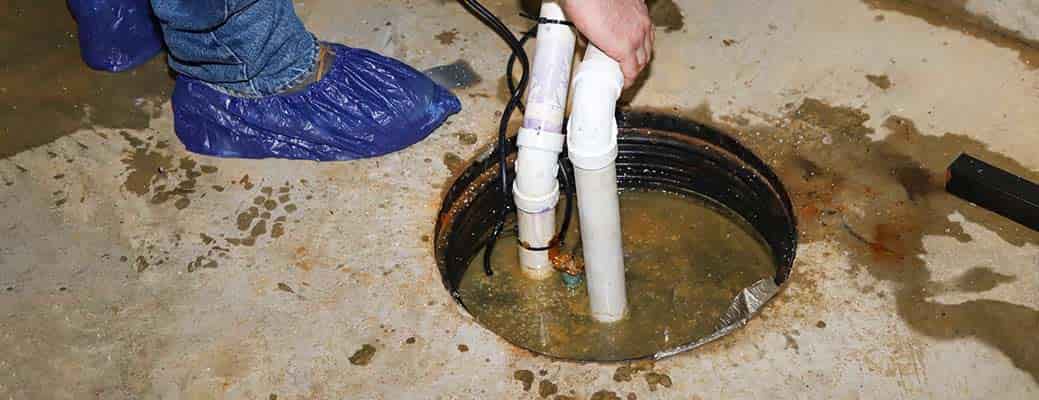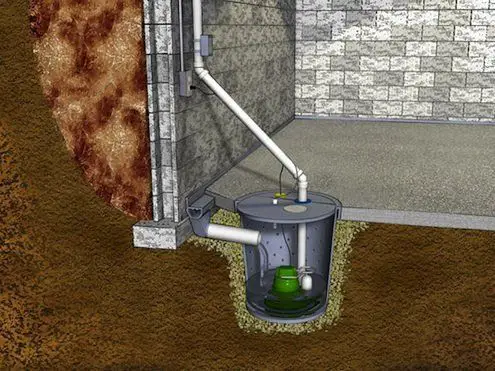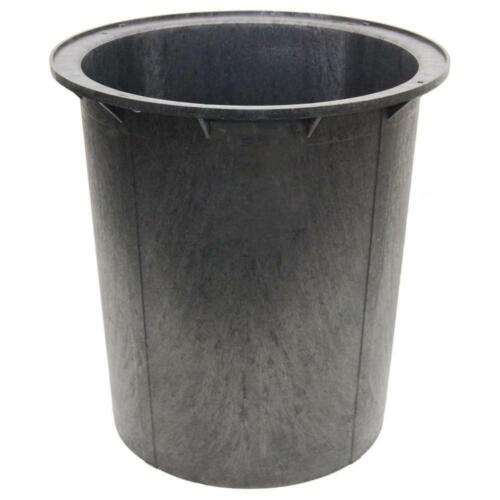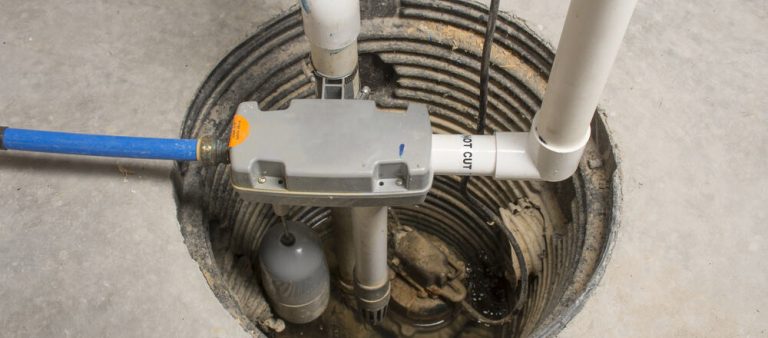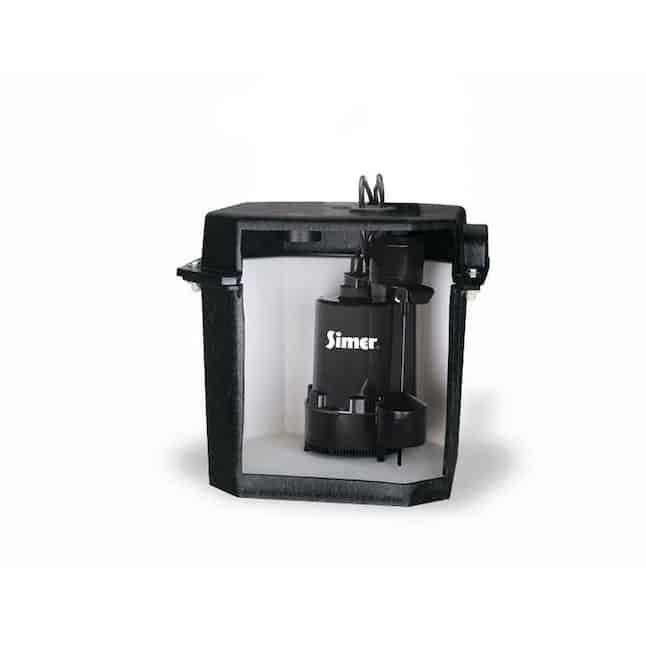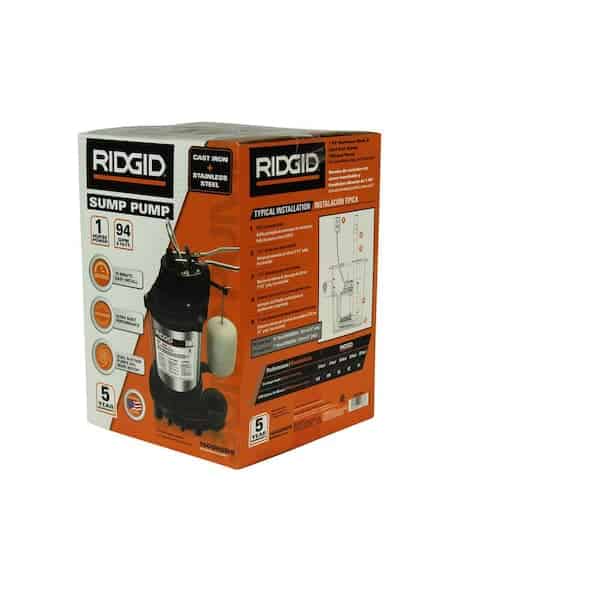Can a Sump Pump Work Without Electricity
A sump pump is a device that helps to remove water from an area that is prone to flooding. This type of pump is often used in basements or crawl spaces where there is a risk of the space filling up with water. A sump pump can be powered by electricity or by a battery, and it will typically have a float switch that turns the pump on when the water level gets too high.
If your home is prone to flooding or has a basement, then you know the importance of having a sump pump. But what happens if there’s a power outage and your sump pump can’t work? Is your home at risk of flooding?
Here’s what you need to know about sump pumps and power outages. A sump pump is designed to remove water that has accumulated in a sump basin, typically located in the basement. The water is pumped out of thebasin through a pipe or hose to another location, such as a storm sewer or dry well.
Most sump pumps are powered by electricity, which means they will not work during a power outage. However, there are some battery-operated models that will continue to run even when the power is out. If you have a battery-operated model, be sure to keep it charged so it’s ready to go when you need it.
If your sump pump does not have battery backup and there’s a chance of flooding during a power outage, there are some things you can do to protect your home. First, consider installing check valves on all drains and pipes leading into the basement. This will help prevent water from flowing back into your home if the power goes out and the pumps stop working.
You should also have sandbags or other flood protection materials on hand in case of an emergency.
While it’s not ideal, running a generator can provide enough power to keep your sump pump running during an extended power outage. Just be sure to follow all safety precautions when using any type of generator.
And if possible, try to connect your sump pump directly to the generator so there’s no danger of overloading circuits or damaging sensitive equipment.
6 Things Sump Pump Owners NEED to Know
How to Drain Sump Pump Without Electricity
If you’ve ever had a sump pump fail, you know the importance of having a backup plan. Here’s how to drain your sump pump without electricity:
1. Find an alternate power source.
A generator is the best option, but if you don’t have one, a battery-operated sump pump will work in a pinch.
2. If your sump pit is dry, start by removing any debris that may have accumulated over time. This will help ensure that water can flow freely when you begin pumping.
3. Next, attach your hose to the outlet of the sump pump and route it to where you want the water to go. Be sure to use a gravity feed system; this way, if your power goes out, the water will still flow freely.
4. Finally, turn on your pumps and let them do their job!
Manually Empty Sump Pump
A sump pump is a vital part of any home’s flood prevention system. It is installed in the lowest point of your basement or crawlspace and pumps water out of the area to prevent flooding. While a sump pump will typically run automatically when needed, there may be times when you need to manually empty it.
If you live in an area with a high water table or are concerned about flooding, it’s important to know how to manually empty your sump pump. Here’s a step-by-step guide:
1. Locate the discharge hose that runs from the sump pump to the outdoors.
This is usually located near the floor near where the sump pit is located.
2. Disconnect the hose from the Pump outlet and place it into a bucket or drain nearby so that any water can be easily disposed of.
3. Use a screwdriver or other tool to remove the lid from the sump pit so that you can access the float switch inside.
The float switch activates the pump when water levels rise, so you’ll need to disable it before proceeding.
4. Once the float switch has been disengaged, use a garden hose to slowly fill up the sump pit with water until it reaches just below overflow level (this will vary depending on your particular model). Be sure not to overfill!
How to Manually Trigger a Sump Pump
If you live in an area where flooding is common, then you know the importance of having a sump pump. This handy device helps to keep your basement or crawl space dry by pumping out any water that may have accumulated. But what do you do if your sump pump isn’t working?
In this case, you’ll need to know how to manually trigger a sump pump.
The first step is to locate the float switch. This is typically a small, plastic float that is connected to the side of the pump.
Once you’ve found it, give it a good tap so that it activates and starts pumping water out of the area.
If there’s no float switch or if tapping it doesn’t seem to work, then you can try using a long pole or stick to activate the pump directly. Most pumps will have a small hole near the top where you can insert the pole and push down on the arm inside.
As long as there’s enough water in the pit, this should start the pump and get rid of any unwanted water.
Knowing how to manually trigger a sump pump can be a lifesaver in case of an emergency. Just remember to always keep an eye on your sump pit and make sure that it doesn’t become overloaded with water.
If it does, then you’ll need to call for professional help as manual triggering won’t work in this case!
Do You Need to Reset Sump Pump After Power Outage
If you have a sump pump in your home, it’s important to know what to do in the event of a power outage. While most modern sump pumps are designed to restart automatically after a power outage, there are some things you can do to help ensure that your pump is working properly.
First, if possible, try to avoid using any electrical appliances or turning on any lights during the power outage.
This will help reduce the strain on your sump pump and keep it from working harder than necessary.
If you must use electrical appliances, be sure to unplug them when you’re finished so they don’t overload the system.
Once the power comes back on, take a few minutes to check on your sump pump.
If it seems like it’s running continuously or making strange noises, it’s best to reset it by disconnecting the power and then reconnecting it again after a minute or so.
By following these simple tips, you can help ensure that your sump pump is able to do its job even during a power outage.
How to Hook Up Generator to Sump Pump
If your home is prone to flooding or power outages, a sump pump can be a lifesaver. But what happens if your sump pump is powered by electricity and the power goes out? That’s where a generator comes in.
By hooking up your sump pump to a generator, you can ensure that your pump will continue to work even when the power is out.
Here’s how to do it:
1. Start by shutting off the power to your sump pump at the breaker box.
This will prevent any accidental electrocutions while you’re working.
2. Next, disconnect the discharge hose from the side of the pump and twist on a threaded adapter. This will allow you to connect a garden hose to the pump so that you can route the water away from your home.
3. Now it’s time to connect the generator. First, open up the generator’s case and locate the terminal marked “sump.” Attach one end of a heavy-duty extension cord to this terminal, then close up the case again.
4. Route the other end of the extension cord through an open window or door into your home and plug it into a nearby outlet (make sure that this outlet is not on the same circuit as your sump pump!).
5. Finally, turn on both devices – first, start up your generator and then flip on the switch for your sump pump at its control panel near where you attached the garden hose earlier. The Pump should now be operational!
How to Protect against Sump Pump Failure
If you live in an area that is prone to flooding, you know the importance of having a sump pump. This device helps to pump water out of your basement or crawl space, keeping your home dry and protected from water damage. But what happens if your sump pump fails?
How can you protect against this potential disaster?
There are a few things you can do to help prevent sump pump failure. First, make sure that you have a backup power source for your pump in case of a power outage.
A generator or battery backup system will ensure that your pump can continue to run even if the electricity goes out.
Second, keep an eye on your pump and regularly check for any signs of wear and tear. If it seems like it is working harder than usual or making strange noises, it may be time to replace it.
Regular maintenance will help prolong the life of your sump pump and decrease the likelihood of failure.
Finally, always be prepared for the worst by having a plan in place in case your sump pump does fail. Have sandbags or other flood protection ready to go so that you can quickly seal off any openings in your home and prevent water from coming inside.
By taking these precautions, you can rest assured knowing that you are as prepared as possible for sump pump failure.
Sump Pump Backup Battery
If you live in an area that’s prone to flooding or power outages, a sump pump backup battery is a must-have. A sump pump backup battery ensures that your sump pump will continue to work even if the power goes out.
There are a few things to consider when choosing a sump pump backup battery.
First, you’ll need to decide how long you want the battery to last. Most batteries will last for around 12 hours, but some may last longer.
Next, you’ll need to choose a battery that’s compatible with your sump pump.
Some batteries are made specifically for certain types of pumps, so be sure to check compatibility before making your purchase.
Finally, you’ll need to decide how much power you need from your backup battery. The higher the voltage, the more powerful the battery will be.
However, higher voltage batteries can also be more expensive. Choose thevoltage that best meets your needs and budget.
How Long Does It Take for a Sump Pump to Overflow
If your sump pump is not working properly, it can cause your basement to flood. But how long does it take for a sump pump to overflow?
There are several factors that will affect how long it takes for a sump pump to overflow.
These include the size of the sump pit, the capacity of the sump pump, and the amount of water that is entering the pit.
A small sump pit with a weak sump pump may only take a few hours for the water to reach the top of the pit and start overflowing. A large sump pit with a powerful sump pump may take days or even weeks before it starts to overflow.
And if there is a lot of water entering the pit, it could overflow very quickly.
So, if you think your sump pump is not working properly, don’t wait for it to start flooding your basement. Call a plumber right away to have them check it out.

Credit: www.basementsystems.ca
How Can I Run My Sump Pump Without Power?
If you live in an area that is prone to power outages, or if you simply want to be prepared for any eventuality, it is important to know how to run your sump pump without power. There are a few different ways that you can do this, and the best method for you will depend on your specific situation.
One option is to use a backup battery system.
This will ensure that your sump pump can continue to run even if the power goes out. You can purchase a backup battery system specifically designed for sump pumps, or you can use a deep cycle marine battery. If you go with the latter option, just make sure that it is fully charged before the power goes out.
Another option is to use a generator. If you have access to a generator, you can simply plug your sump pump into it and it will work just like it would if it were plugged into an outlet. The only downside of this method is that you will need to keep the generator running as long as the sump pump is running, which could be problematic if the power outage lasts for an extended period of time.
Finally, another option is to use gravity. If your sump pit is located below the level of your home’s foundation drains, you can gravity-feed water from the pit into the drains using a garden hose. This will allow your sump pump to continue working even without electricity, but it does require some advance planning and preparation.
No matter which method you choose, it is important to be prepared ahead of time so that you know what to do when the power goes out. By taking some simple precautions, you can ensure that your sump pump will continue working even when there’s no electricity available.
How Long Can a Sump Pump Run Without Power?
A sump pump can theoretically run indefinitely without power, provided it has a reliable source of water to draw from. In practice, however, most sump pumps will only be able to run for a few hours without power before the water level in the sump pit drops too low and the pump starts to cavitate (i.e. suck air instead of water).
Can I Turn on Sump Pump Manually?
If your power goes out, or you experience a flooding event, you may be wondering if you can turn on your sump pump manually. The answer is yes, in most cases you can turn on your sump pump manually. However, there are a few things to consider before doing so.
First, check to make sure that the power is actually off to the sump pump. If the power is still on and the pump is not working, it may be because of a faulty switch or float arm. In this case, it is best to call a professional to diagnose and repair the issue.
Assuming the power is off, you will need to locate the manual override switch for the sump pump. This switch is usually located near the electrical panel for the home. Once you have found the manual override switch, flip it to the “on” position.
Now that the manual override switch is in the “on” position, go ahead and plug in your sump pump into a nearby outlet (if it isn’t already plugged in). You may also need to reset any GFI outlets that are protecting outlets near where water could potentially enter your home – this includes basements, crawlspaces, garages, etc. With everything plugged in and turned on, your sump pump should now be operational.
Keep in mind that running your sump pump continuously can put a strain on both the pump and electrical system of your home – so only use it when absolutely necessary!
How Do I Pump Water Out of My Basement Without Electricity?
If your basement is flooded and you don’t have electricity, there are a few ways you can pump the water out. If you have access to a generator, you can use that to power a sump pump. If you don’t have a generator, you can try using a gas-powered water pump or a battery-operated water pump.
You can also try bailing the water out with buckets.
Conclusion
If your sump pump is powered by electricity, then it will not work during a power outage. However, there are ways to keep your sump pump working without electricity. You can use a battery backup system, which will kick in when the power goes out.
You can also use a water-powered sump pump, which uses water pressure to operate.

